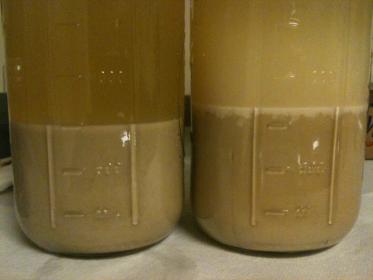I read somewhere that you should only propagate yeast for four generations. Don't jump on me here, I know some people pay no attention to that, but it's what I read.
Ok, let's say you buy a pack of yeast and make a batch of beer. That's one generation. You wash your yeast and collect four jars of yeast. You could do more, or less, I'm just using four as an example. You make four starters and four batches of beer out of those four jars. That's generation 2. You wash your yeast from the last jar and collect four more jars/batches. That's generation 3. Add four more for generation 4 and you have a total of thirteen batches of beer from the original pack. So that's potentially 65 gallon of beer from one pack of yeast. Or 130 gallons if you're like me and brew mainly ten gallon batches. Of course that's assuming you brew with all those saved yeasts before they go bad; they don't last forever.

























































